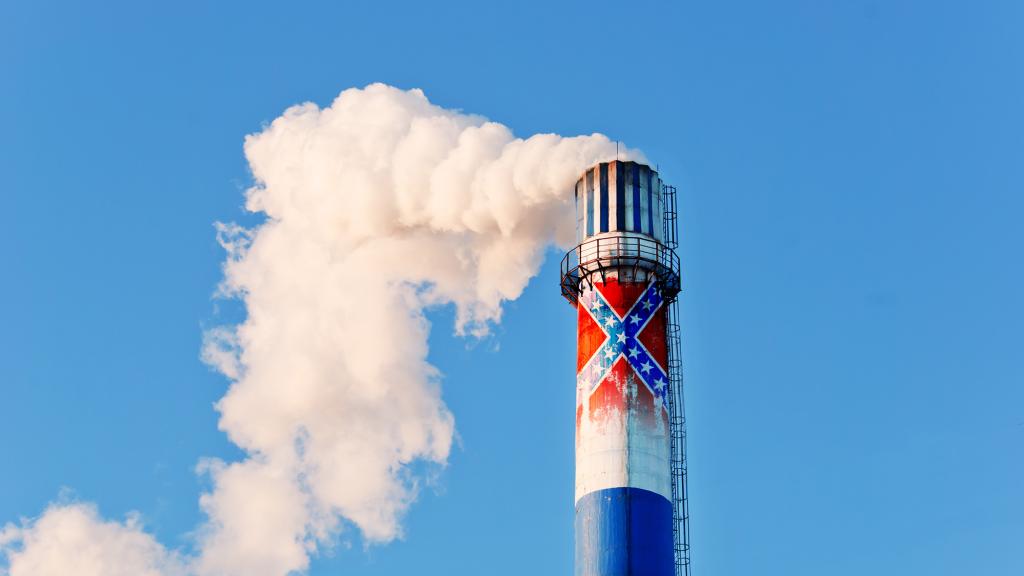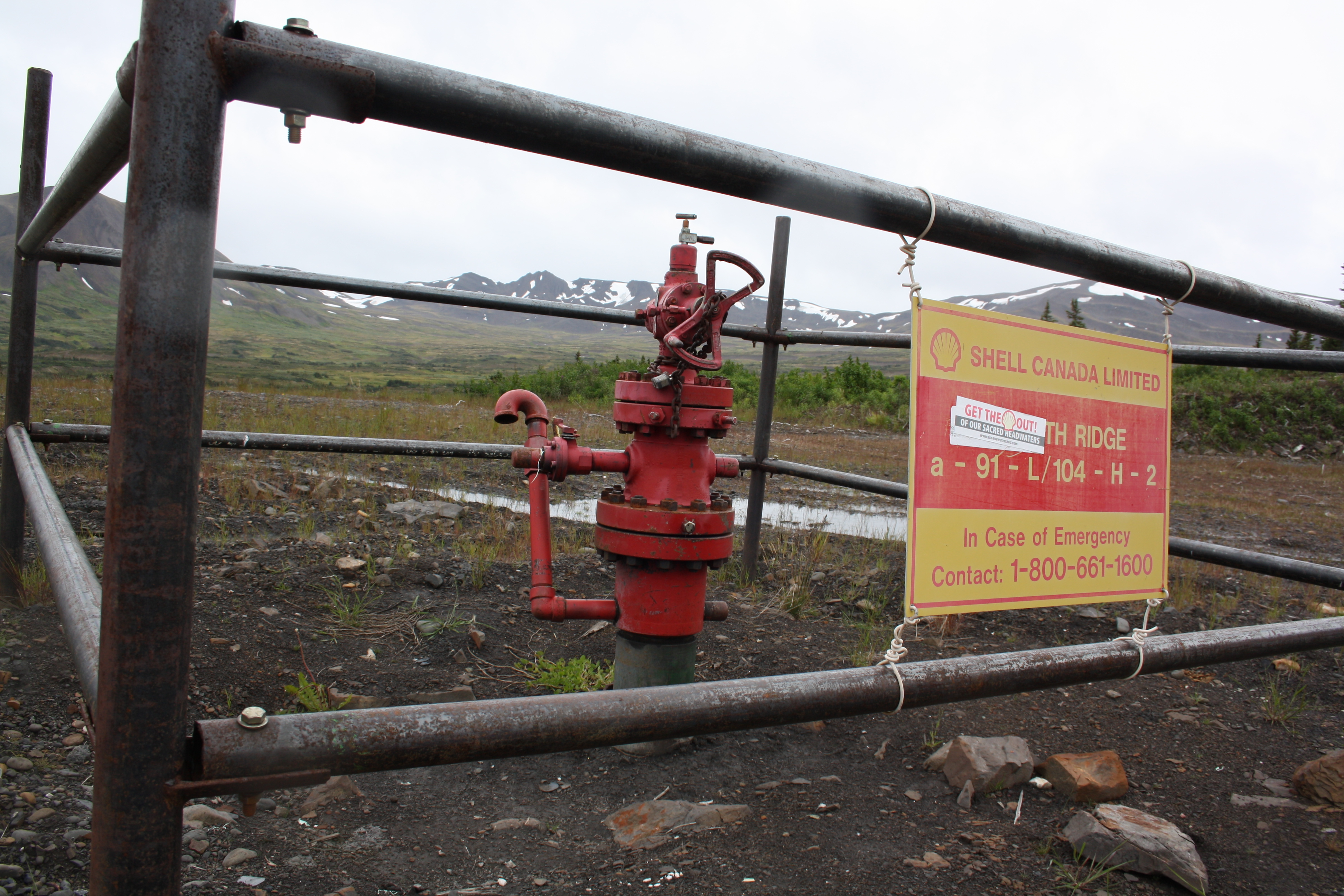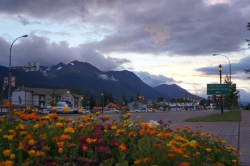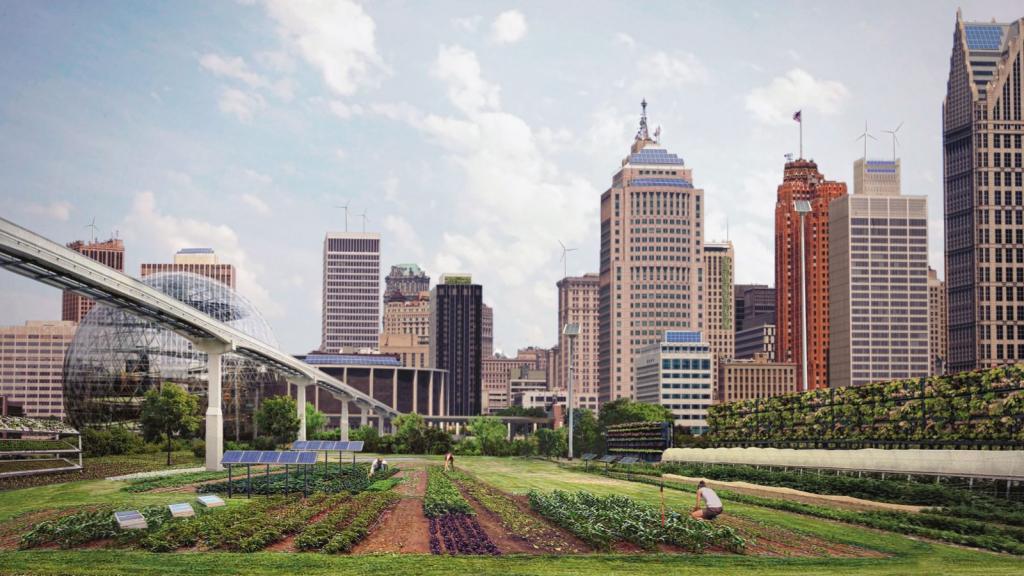Editor’s note: This is part 1 of Grist’s series on the Sacred Headwaters. Read part 2 here and part 3 here.
I’m helicoptering over a thousand-mile mess of dirt-dusted glaciers, spongy tundra, and bristling forest in the far north of British Columbia. My gut wobbles as we drop past mountain ridges toward our destination: a soupy, pea-green bog dotted with a handful of black ponds. Fed by whitewater trickles draining the peaks around us, it’s a sucking, primordial muck reminiscent of an antiquated dinosaur mural, or a day-glo panel from Swamp Thing’s origin issue. And sure enough, it’s the birthplace of something big, ancient, and slippery: the Skeena, Nass, and Stikine — three of the largest salmon rivers on the West Coast, all born here or near here in the Sacred Headwaters.
But the Sacred Headwaters doesn’t owe its growing fame to the chinook, coho, and silver salmon races that have been flapping up these rivers since before the Bering Strait opened to pedestrians. For that, we ultimately must thank what lies buried directly 2,000 feet below: 8 trillion cubic feet of natural gas trapped inside vast beds of coal.
Even distant spectators of climate change news know we hear almost all bummer tunes. Between the Chinese-finger-trap gridlock of domestic politics and moribund international summits always ending with grim predictions and toothless resolutions, avoiding an apocalyptic New Normal seems impossible.
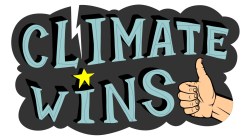
Join Grist for an exploration of recent climate wins. This is a guarded, cautiously optimistic thumbs up, mind you.
As an increasingly fatigued spectator, I look for any reason to emerge from under my Linus cloud. That’s why I jumped when I heard whispers about a remote community in Northern B.C. — First Nations tribe elders, hunters, loggers, sportsmen, skiers, tar-sands workers, environmental NGOs, parents — who all banded together to dissuade no less than Shell Oil from digging up all that carbon. It seemed like a rare clean win, a satisfying victory in an eight-year fight that kept carbon in the ground and high-fived fish over fossil fuels.
Shocker: The reality is much, much more complicated than that. But with the whole of our country mired in the will-he-or-won’t-he tug of war over Keystone XL, I was tired of being fly-papered into uncertainty and agitation. I wanted to look north for inspiration. And so I went.
Northern B.C. hosts 50,000 people scattered across a landscape bigger than California. Modest hamlets like Smithers and Hazelton last a few stoplights before getting swallowed by Jack London. In the lower 48, the expansionist idea of a wilderness of inexhaustible resource looks painfully naïve to even the most casual observer. Here, taming — or even knowing — the seemingly endless forests, rivers, and mountains escapes the imagination.
Even elementary Loraxers know there’s always an end. And whether trees or salmon, Northern B.C.’s economic destiny bends to the extractive — but what’s available aboveground can’t compete with the value of what’s buried underneath it. B.C. exports nearly $1.4 billion in coal to China alone, and another $516 million in minerals and metals. Factor in Canada’s rogue petrostate aspirations, and by the mid aughts, Northern B.C.’s future as a leading carbon provider seemed all but assured.
In 2004, the B.C. government hit the gas by dangling that 8 trillion cubic feet estimate and calling for bids to issue natural gas drilling rights in a 2,485-square-mile area known as the Klappan. Here, upper Jurassic and Lower Cretaceous sediments 3,608 feet below the earth contain 37 million tons of anthracite coal in 27-foot-thick seams, with natural gas laced between, held in place by briny water. Above rise 7,000-foot mountains, salmon streams, and wildlife corridors for caribou, moose, stone sheep, and grizzly. Getting at the gas would require an “unconventional” technique called coalbed methane extraction. While often lumped in with hydraulic fracturing, this country cousin operates like fracking in reverse. Drill towers puncture rock and earth until they reach the anthracite bands; then they hoover out the groundwater like a syringe draining a cyst. Absent water, the pressure reduces and natural gas flows up the needle.
Without public consultation, the B.C. government granted Shell Canada the bid. The company paid the B.C. government a $9.5 million fee and built three test wells that winter, with plans to build 15 more test wells. If those bore fruit, Shell had plans to create a network of several thousand wells, with 2,200 miles of roads and pipelines spidering out from them across the Klappan.
But those 15 test wells never got built. When Shell returned in January 2005 with heavy machinery to continue exploration, they found the only road in blockaded by elders and members of the Tahltan, a 5,000-strong tribe that has used the area — what they call the Klabona, or Sacred Headwaters — for traditional hunting and fishing since before recorded history. The elders — now calling themselves the Klabona Keepers — camped for months to protest Shell and other interests like Fortune Minerals, and in the process became the spear point for a community on the verge of uprising. Shell had barely pierced the ground, and they’d awakened a sleeping giant.
Lillian Campbell, Tahltan elder, on getting arrested. [Courtesy ForestEthics.]
In Sacred Headwaters territory, you learn pretty fast not to call even the crunchiest green an environmentalist. Today’s carbon crusader might be descended from trappers or outfitters who have bad memories from run-ins with Greenpeace over big-game hunting; in some cases, they’ll have fought back against hunter-hating greenies firsthand. And at the inaugural “Save Our Salmon” rally, they’ll be serving moose chili they hunted themselves, thank you very much.
“I don’t consider myself an environmentalist at all,” says Shannon McPhail, executive director (“for the fancy business card; I’m not the boss of anybody”) of the Skeena Watershed Conservation Coalition, a nonprofit environmental organization formed by concerned locals in response to Shell. Now they function as a bulwark when external interests come knocking a bit too hard or often. “You can’t call us just tree-hugging hippies or knuckle-dragging rednecks. Our organization is a full-on lovechild of the Skeena: If all the hippies, settlers, pols, and rednecks birthed a kid, this is what it would look like.
“We sort of have this balance/common sense approach,” she says. “We live here; we know what happens here; so when industry and government come from Calgary or Victoria, each of us can say, ‘Do you know what it’s like to truck in a winter’s worth of wood?’ We’ve all gone through this evolution — you don’t know who your allies are. When you target one group you alienate people. Some of our biggest allies have been welders in the tar sands, big game outfitters, trappers.”
A sixth-generation native to Hazelton, B.C., McPhail exemplifies this complicated evolution herself. As both a river guide and a welder, she first encountered Shell’s operations in her backyard when she was looking for closer work for herself and her husband, who still works in the Alberta tar sands where they met — “in the belly of the beast,” as she puts it. She equated Shell’s entry into the headwaters with jobs and prosperity — until she learned that local employment would be ephemeral, profits wouldn’t stay in the province, and that coalbed methane extraction could potentially put salmon-bearing streams at risk.
“We are an extraction region — it’s not about opening the door, because that’s already happened,” she says. “This is about the pace and scale of development. We have never wanted to be an organization opposing big development, even though that’s a big part of what we do. But we’re going to look at things really critically, and sometimes we’ll say yes. Now there is too much, in too short a time, and not in a way that benefits these people. All these proposals are interfering with people’s lives in a huge way.”
The biggest way goes back to fins and fur: Assessments by the SWCC, IBM, and others concluded that Sacred Headwaters salmon sustains $110-150 million in retail, fishing, and food value, and another $1 billion in tourism, outfitting, hunting, and associated services. Five hundred permanent jobs are tied to salmon alone, and the relatively low visibility — Northern B.C. has a patchwork of six understaffed provincial parks and no national parks — leaves a vast and unexplored market for adventure and ecotourism.
Tahltan tribe elder Mary Dennis explains the value of salmon. [Courtesy ForestEthics]
Carrie Collingwood grew up in that business. The daughter and niece of local outfitting legends Ray and Reg Collingwood (who tussled with Greenpeace and eventually won a court case against them), she helps run their venerable 40-year-old operation, Spatsizi Wilderness Lodge, and runs a fly fishing outfit of her own (Babine Norlakes). By the time Shell Canada arrived, the battle lines were clear.
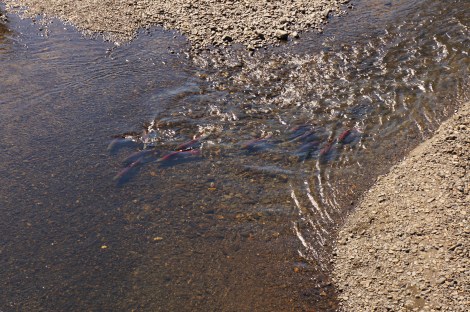
Ted AlvarezOut of gas, but not swimming in it: Coho salmon running in the Sacred Headwaters, Aug. 2013. Click to embiggen.
“Spatsizi (Provincial Park) is protected from resource extraction, but wildlife and salmon don’t follow park boundaries,” she says. “Beyond the contamination to water, for us the biggest concern was definitely the scar across the linear landscape. All the roads, the pathways, the various wellheads over a huge expanse of land — all that gives wolves much easier access to moose and caribou calves. It interrupts migration corridors and affects downstream wildlife — our business.”
But the snowball started by the Tahltan blew beyond business concerns and rolled straight into the heart of the community, picking up momentum and followers of all stripes as it went.
“When I first heard about it I had no idea what was involved,” Collingwood says. “Fracking, drilling, coalbed extraction — I went to open houses to see what was going on. We really got involved right when I realized the magnitude: It wasn’t like just it’s not good for our business. When we discovered this isn’t good for anybody, we started working with the Tahltan with wildlife monitoring on the Klappan. We ended up creating the Spatsizi Heritage Fund, and all the money that we raised, we turned around and supported the Tahltan.”
Anthropologist, writer, and National Geographic explorer-in-residence Wade Davis is among those who have shouted for the Tahltan loudest and longest. He’s lived seasonally in the Sacred Headwaters region since 1978, serving as the first ranger for the adjacent Spatsizi Provincial Park. He’s married, conceived children, and seen friends live, thrive, and even die on traplines in his time on the land drained by the Stikine, Nass, and Skeena. In 2011, he published The Sacred Headwaters: The Fight to Save the Stikine, Skeena, and Nass. In it, Davis describes the 50-mile lake chain that flows out from Ealue Lake, where he established a family fish camp:
Nine bodies of water altogether, each more beautiful than the next, and all supporting an astonishing wealth of fish and game: rainbow trout in every eddy and stream, moose in the fens, grizzly and black bears in white spruce forests that skirt the upland plateaus, which nurture populations of sheep and mountain goats as abundant as any known to exist in the world.
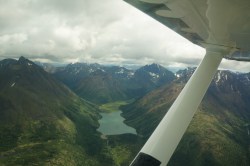
Ted AlvarezJust hitching a taxi ride ’round the neighborhood near Tatogga Lake, B.C. Click to embiggen.
But beyond raw wilderness romance, Davis credits the human factor for turning it into a home. He speaks of mapping the Tahltan culture through 25 years of research in the same breath as watching a late-night dinner for one late traveler swell into a feast for 49.
“You grow loyalty to the country as it grows around you,” Davis says. “I was living a whirlwind but Ealue Lake became this well we drank from year after year. It was pivotal to the wellbeing of my family. It’s an exotic home, but through time I learned it wasn’t wild at all. This is really a neighborhood where people came to terms with the land, and because of that there’s a magic to it. No one would take a stick of firewood — if you’re part of the community, you’re part of the community. And they will come together, native and nonnative, to stand up for the land.”
Next: Tensions grow as the fight to save the Sacred Headwaters goes international.
